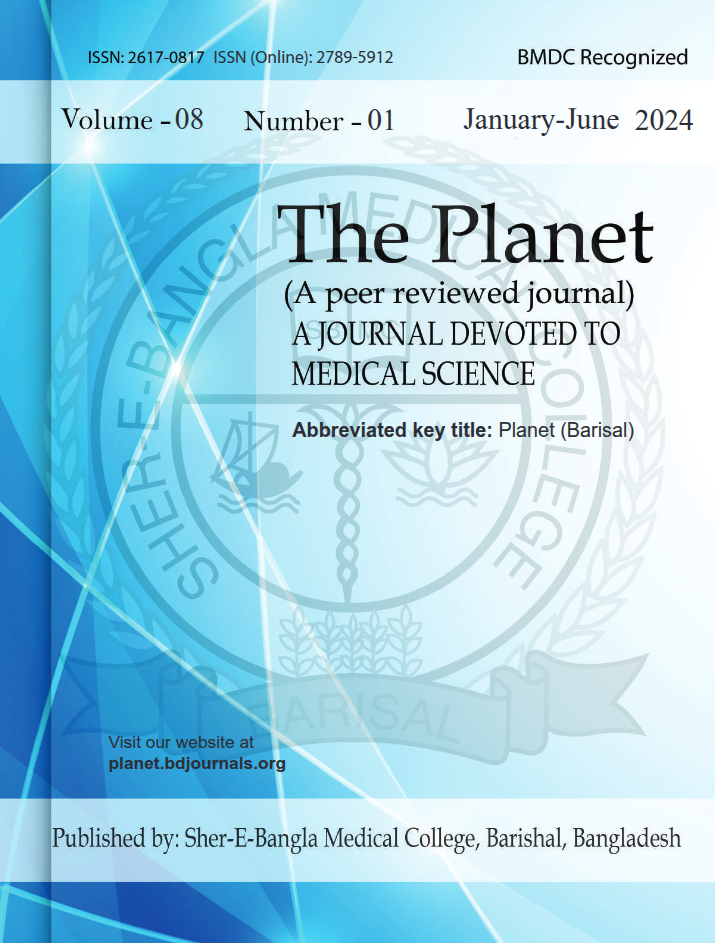Patterns of Proton Pump Inhibitor Prescribing Practices — A Cross-Sectional Analysis of Tertiary Care Hospital Patients
Published 28-12-2024
Keywords
- Proton Pump Inhibitor,
- Indication,
- Prophylaxis,
- Guideline
Copyright (c) 2024 The Planet

This work is licensed under a Creative Commons Attribution 4.0 International License.
How to Cite
Abstract
Introduction: The introduction of PPIs revolutionized acid-related disease treatment but led to widespread overuse. This study assessed PPI appropriateness in medicine, surgery, and gastroenterology wards at Dhaka Medical College Hospital. Methods & Materials: This cross-sectional observational study was conducted at the Department of Pharmacology and Therapeutics, Dhaka Medical College, Dhaka, from July 2019 to June 2020. A total of 600 patients were selected as study subjects by purposive sampling technique. Data were collected and evaluated considering USFDA (2014) approved indications, NICE (2014) guidance recommendations, and the systematic review by Scarpignato et al. (2016) recommendations. Data were analyzed using descriptive statistics. Analysis of data was carried out by using Statistical Package for Social Science (SPSS) 22.0 for Windows. Result: Among 521 patients, who were prescribed PPIs, 255 (48.9%) patients were given PPIs for appropriate indications, whereas in 266 (51.1%) patients indications were not appropriate for prescribing PPIs. There was a significant difference (p<0.05) inappropriateness in the usage of PPIs in different departments of Dhaka Medical College Hospital. Among the three departments, for prescribing PPIs appropriate indications were followed mostly in the gastroenterology department (59; 59.6%), followed by the medicine department (93; 49.5%), and were lowest (103; 44%) in the surgery department. Conclusion: This study highlights widespread PPI use (86.8%) in a tertiary hospital, with 51.1% of prescriptions inappropriate. Gastroenterology showed better adherence to guidelines than medicine and surgery, underscoring the need for targeted interventions.



